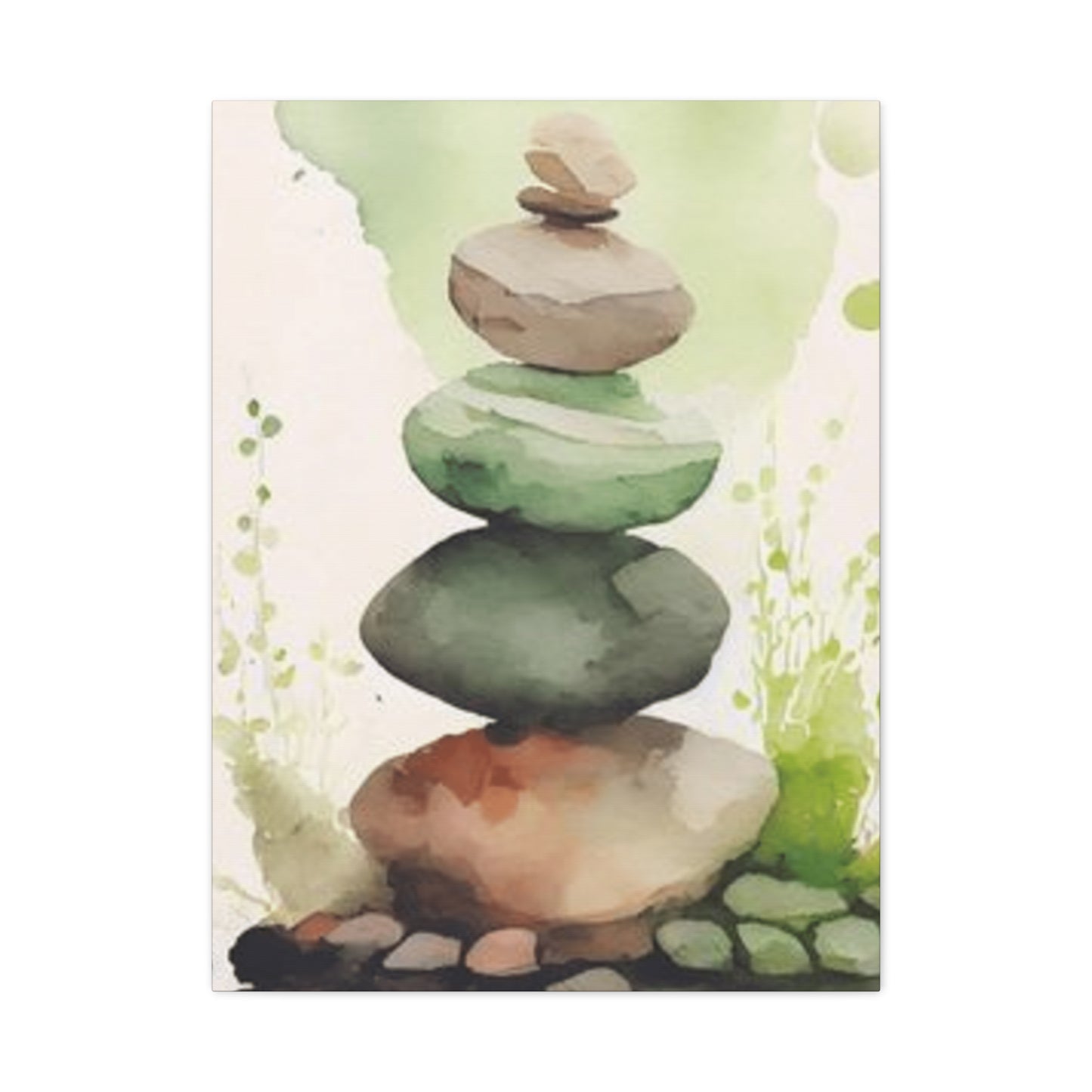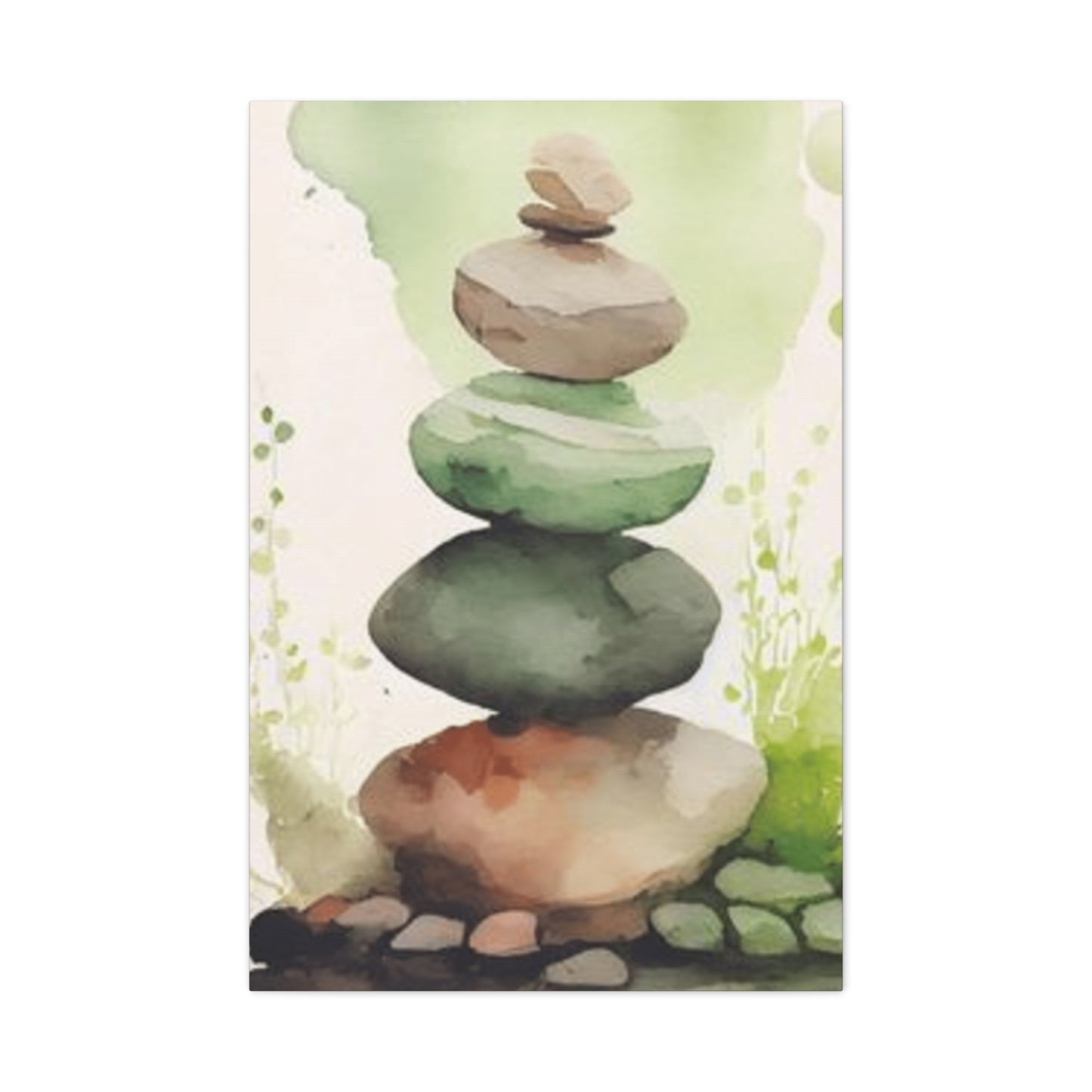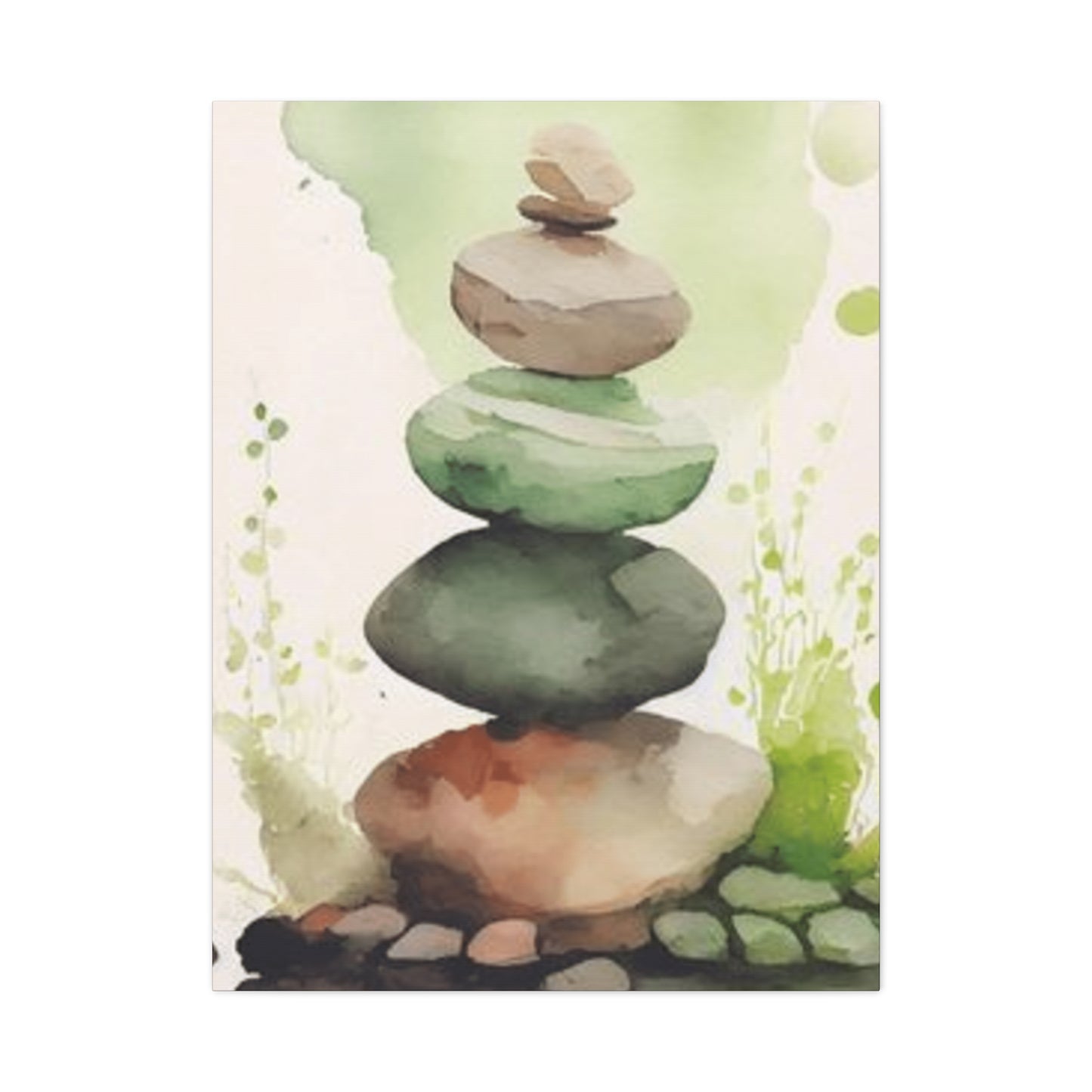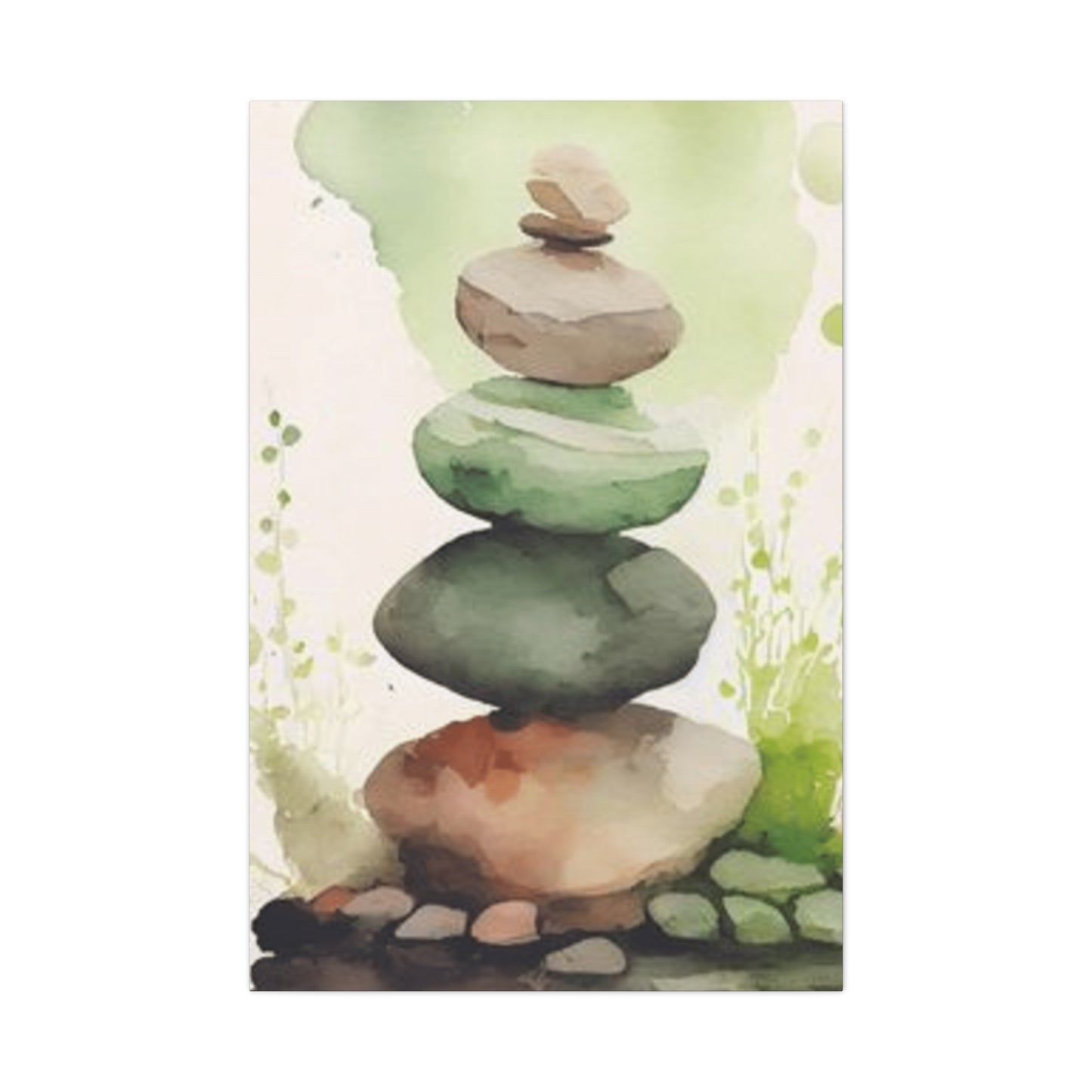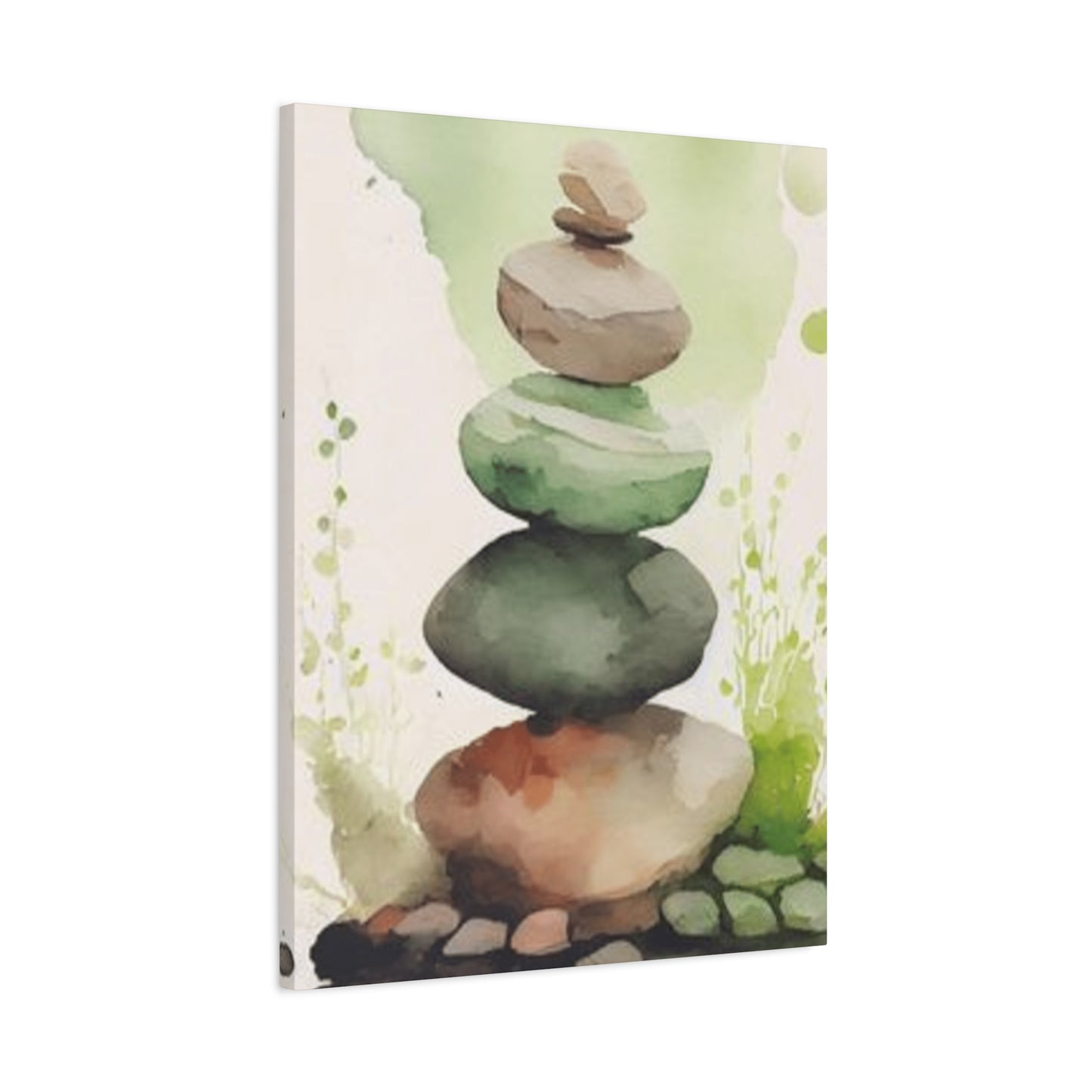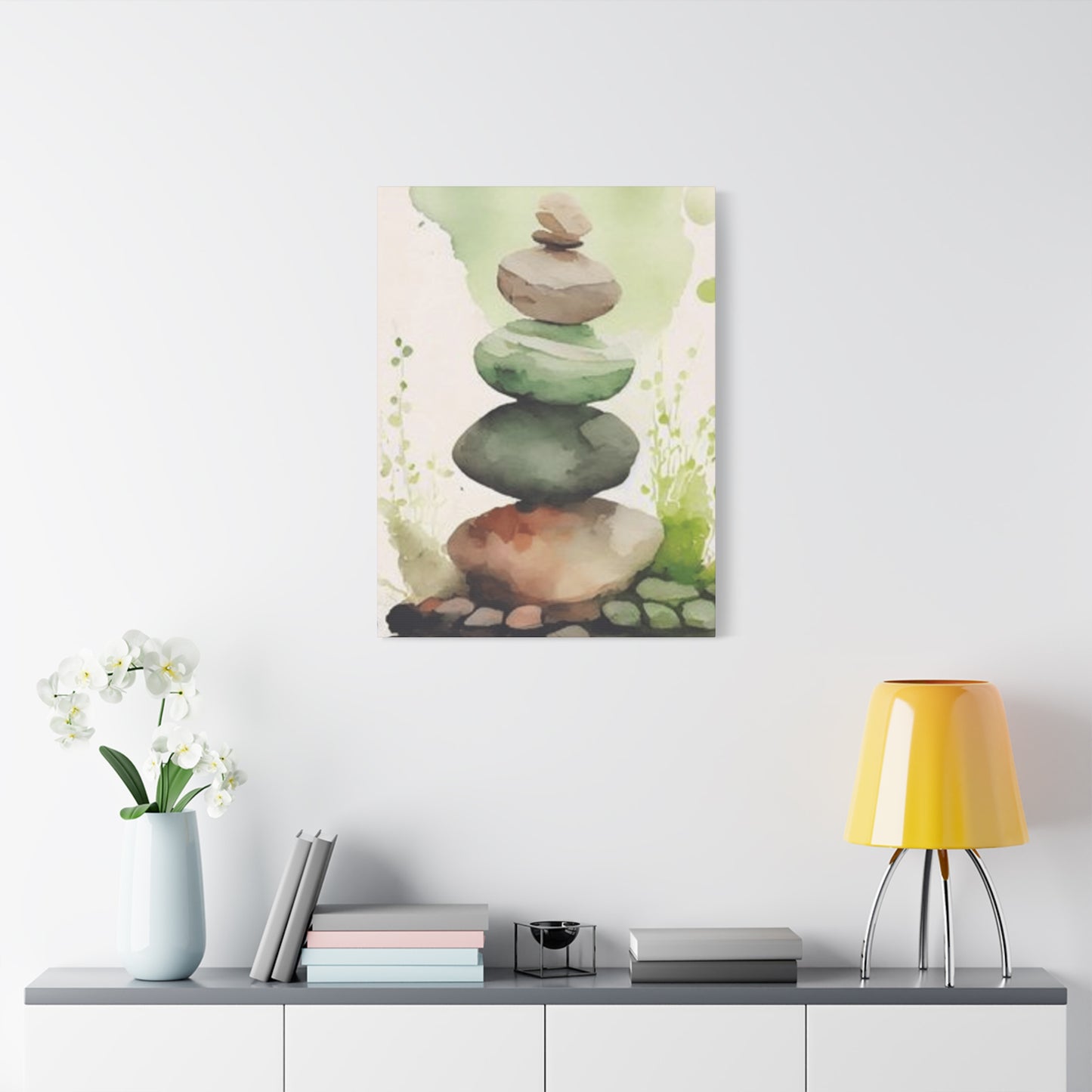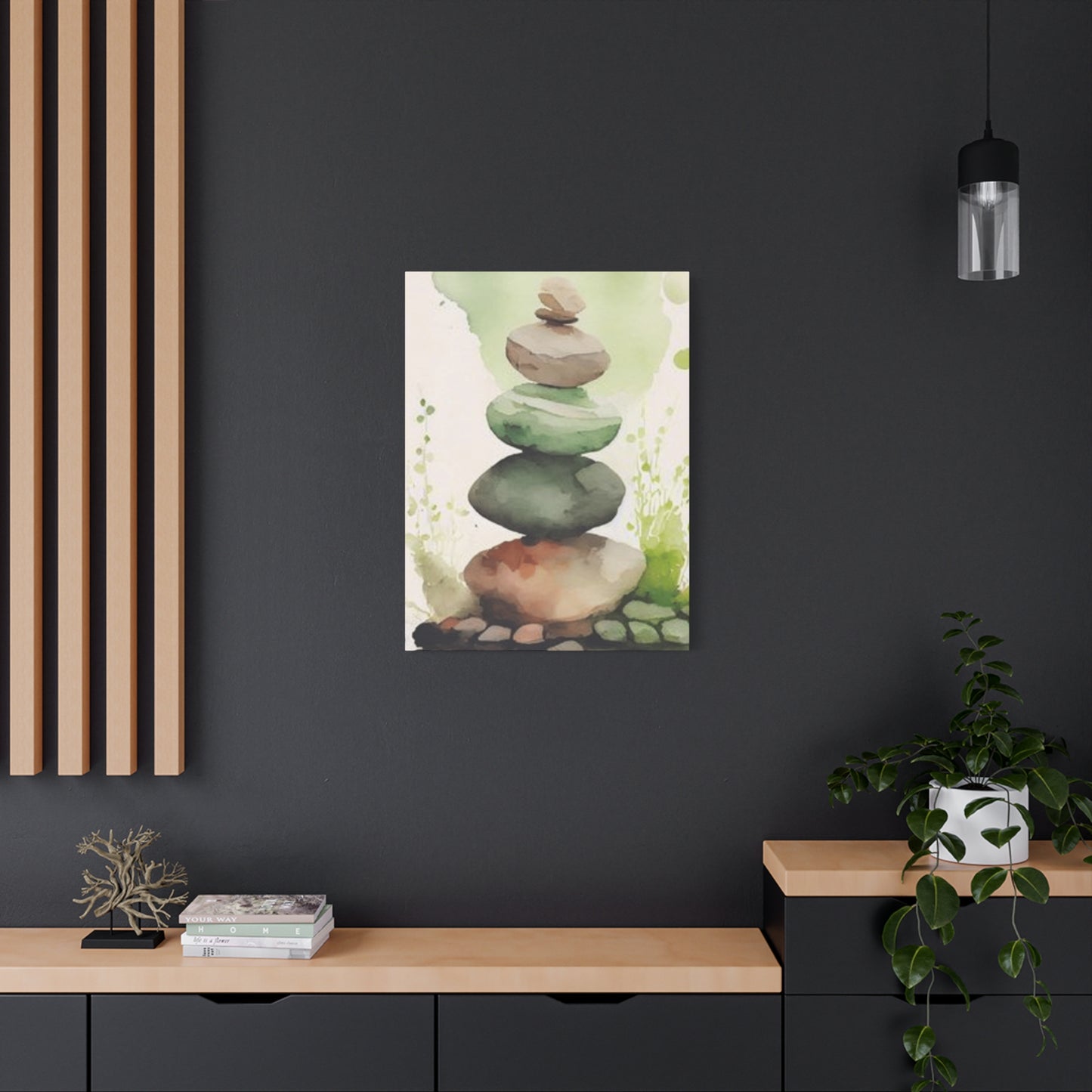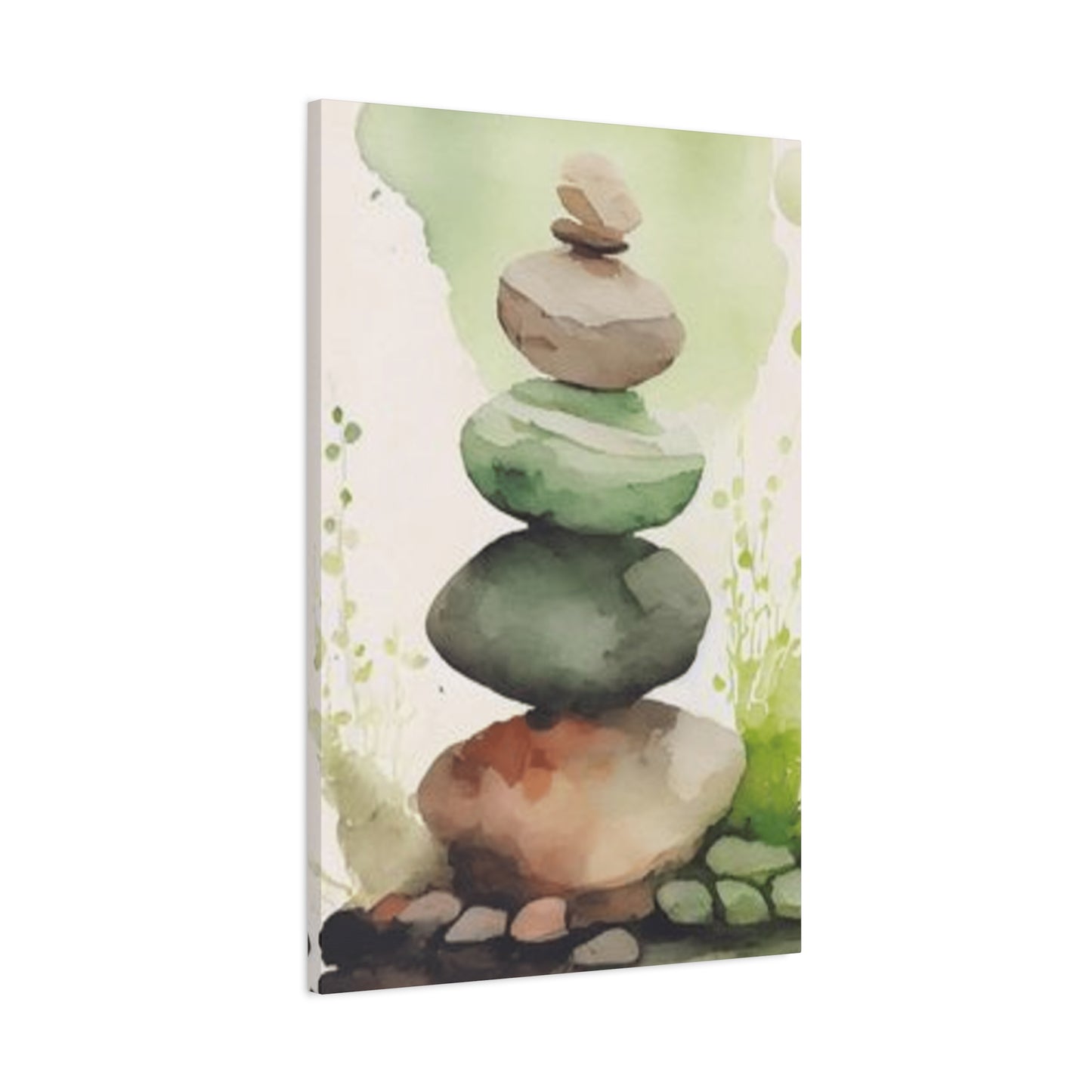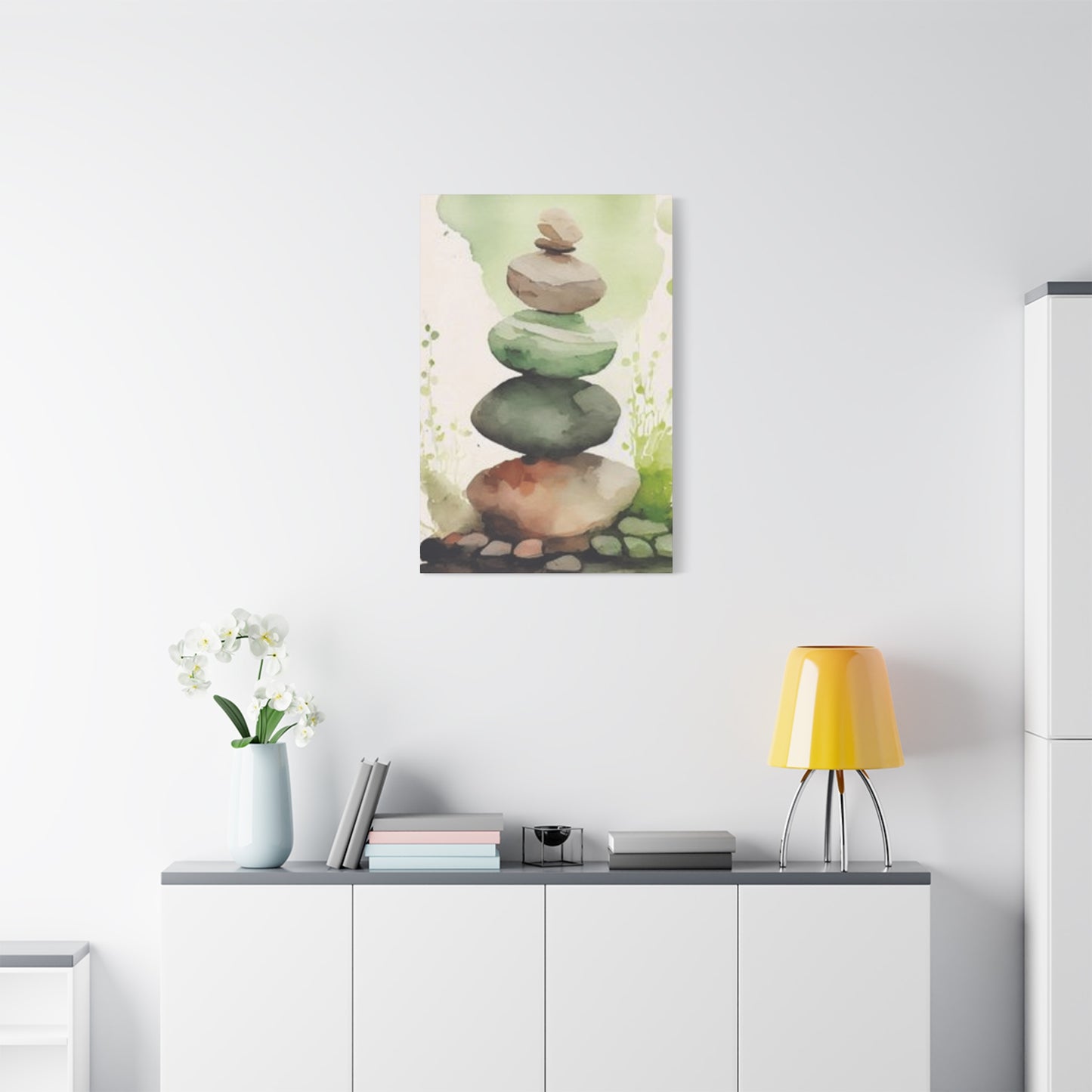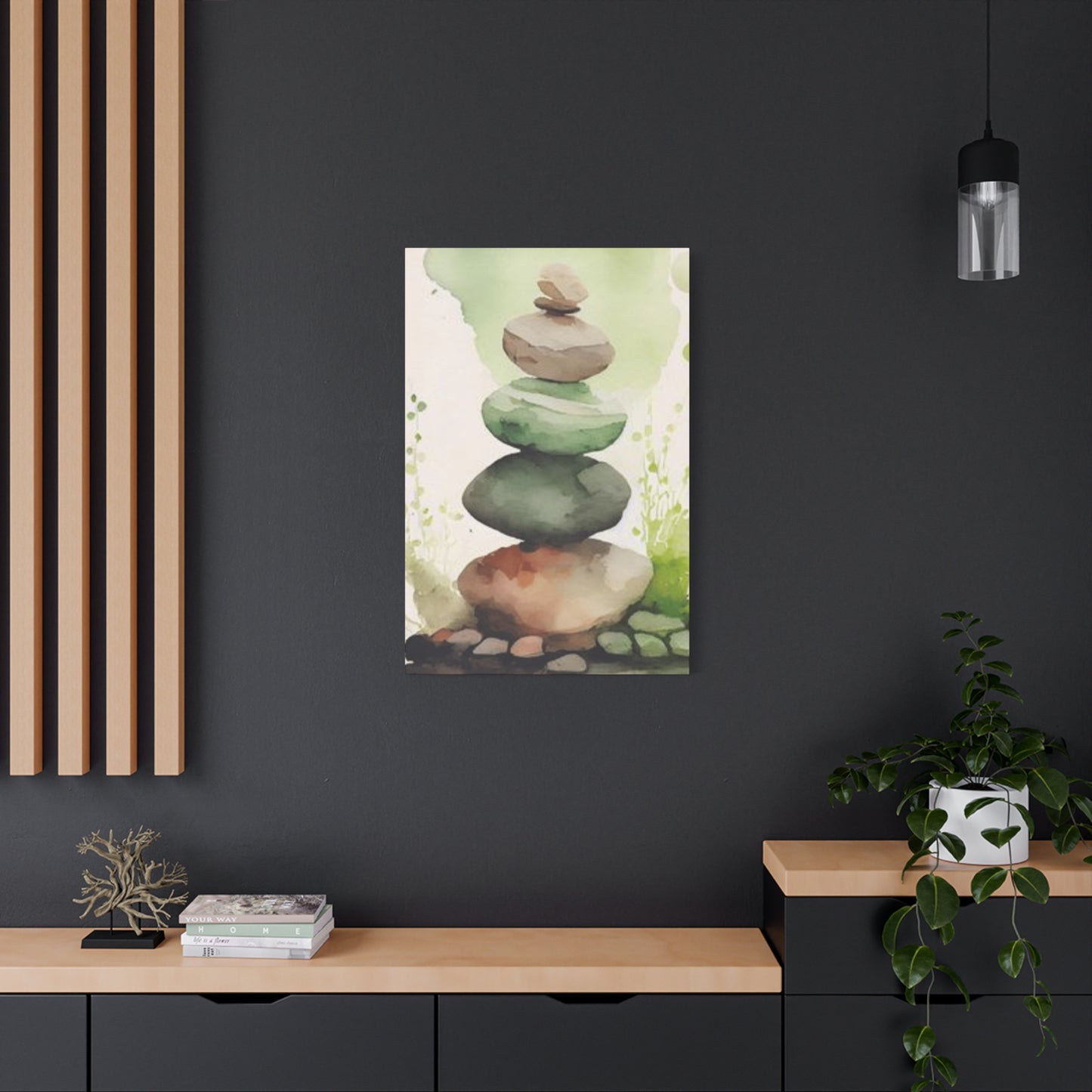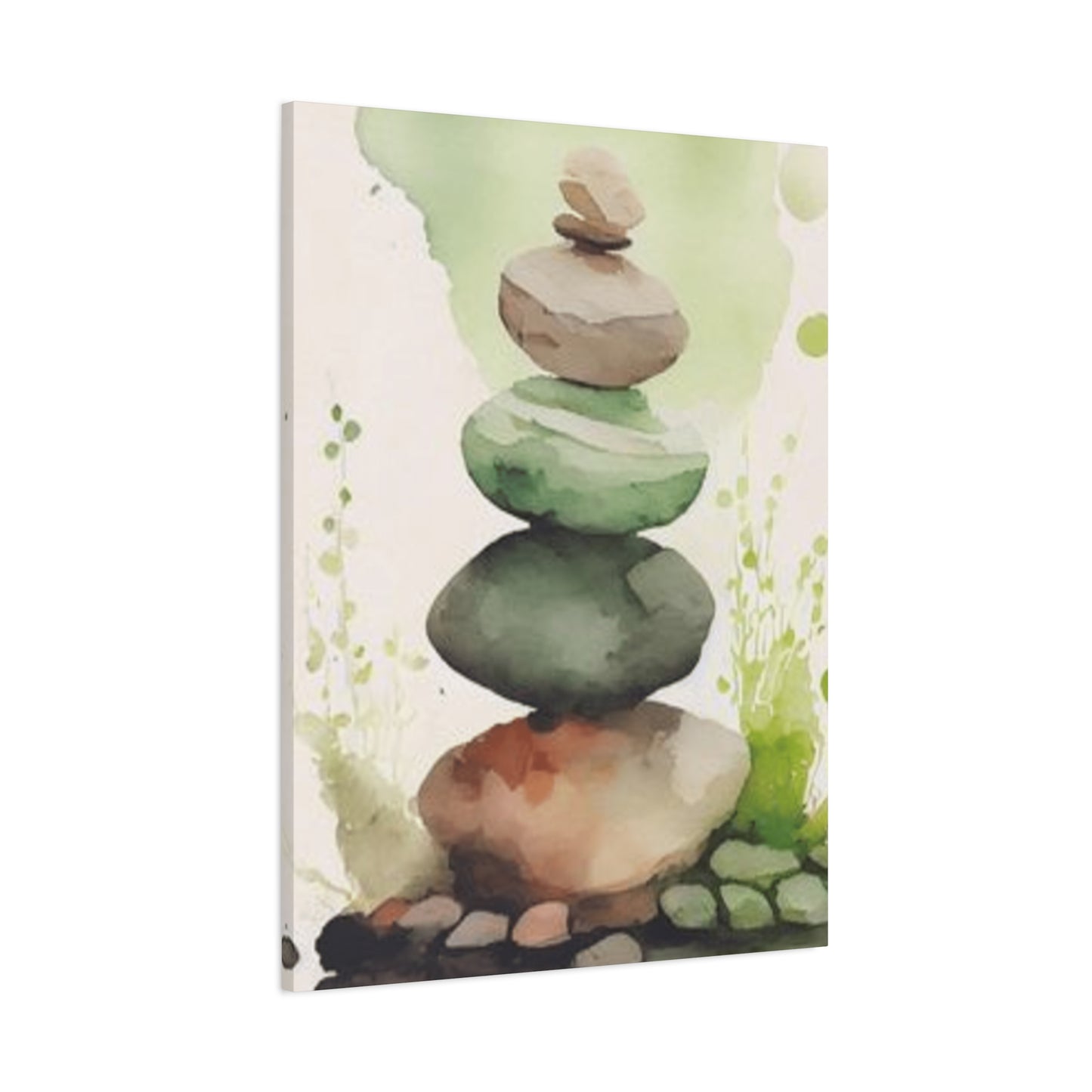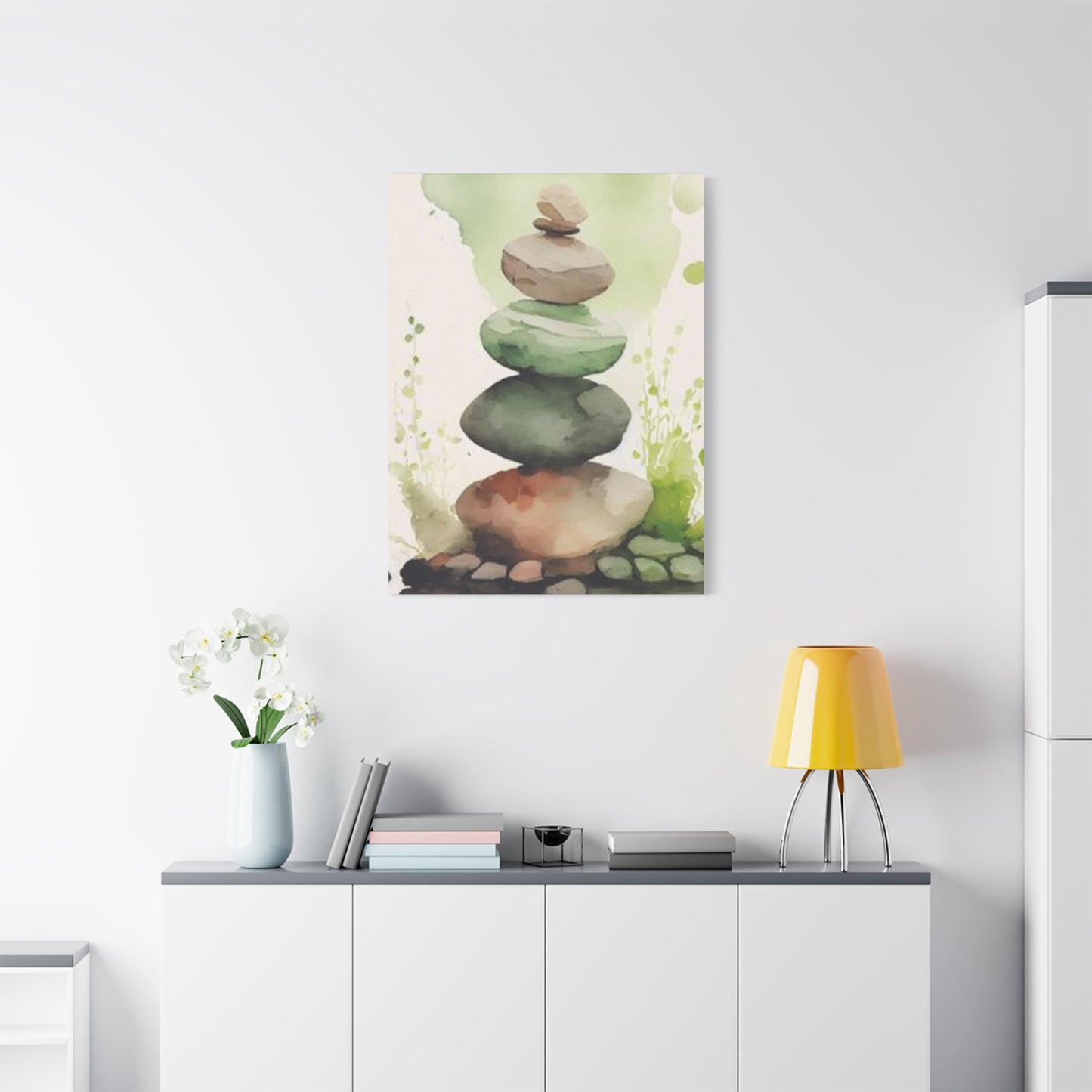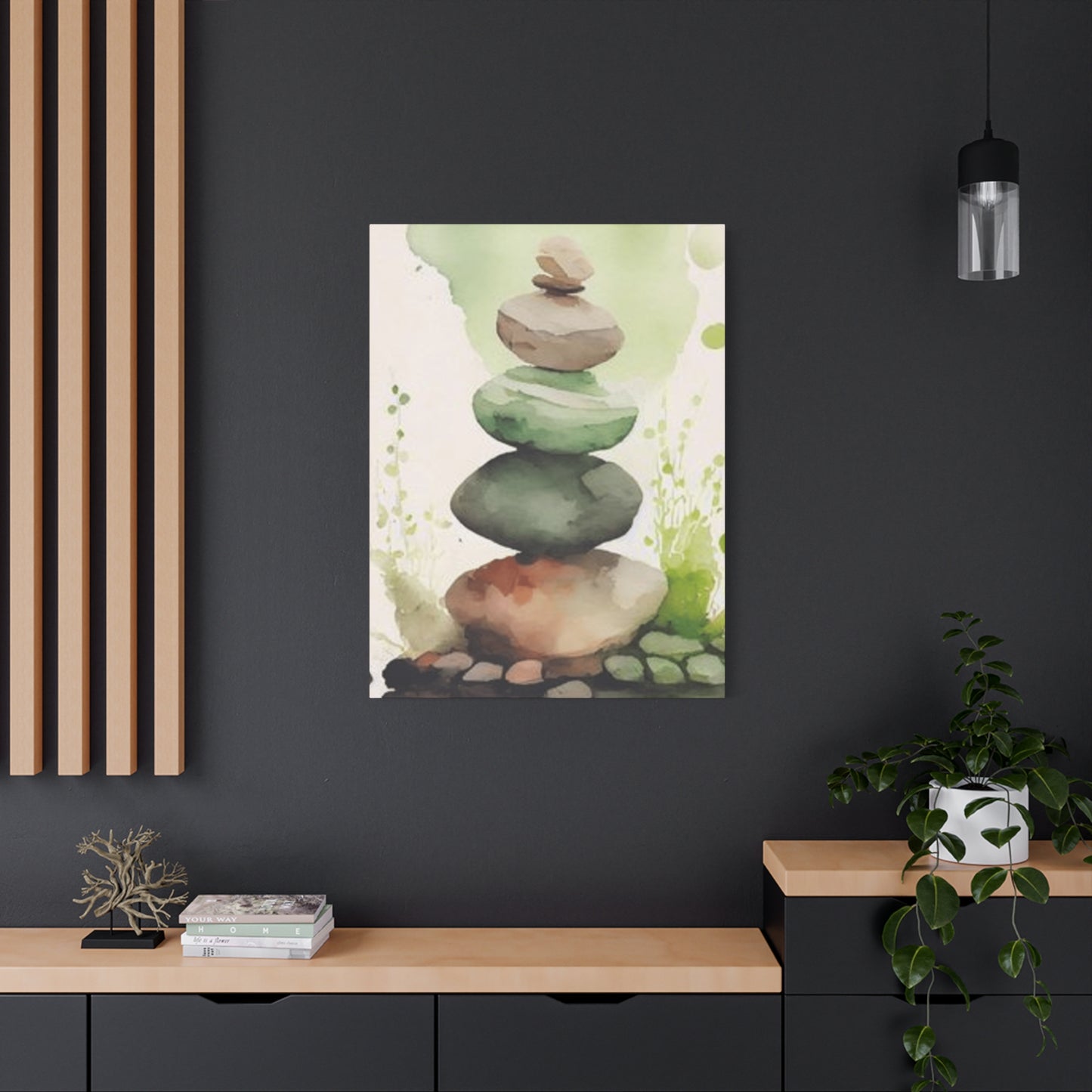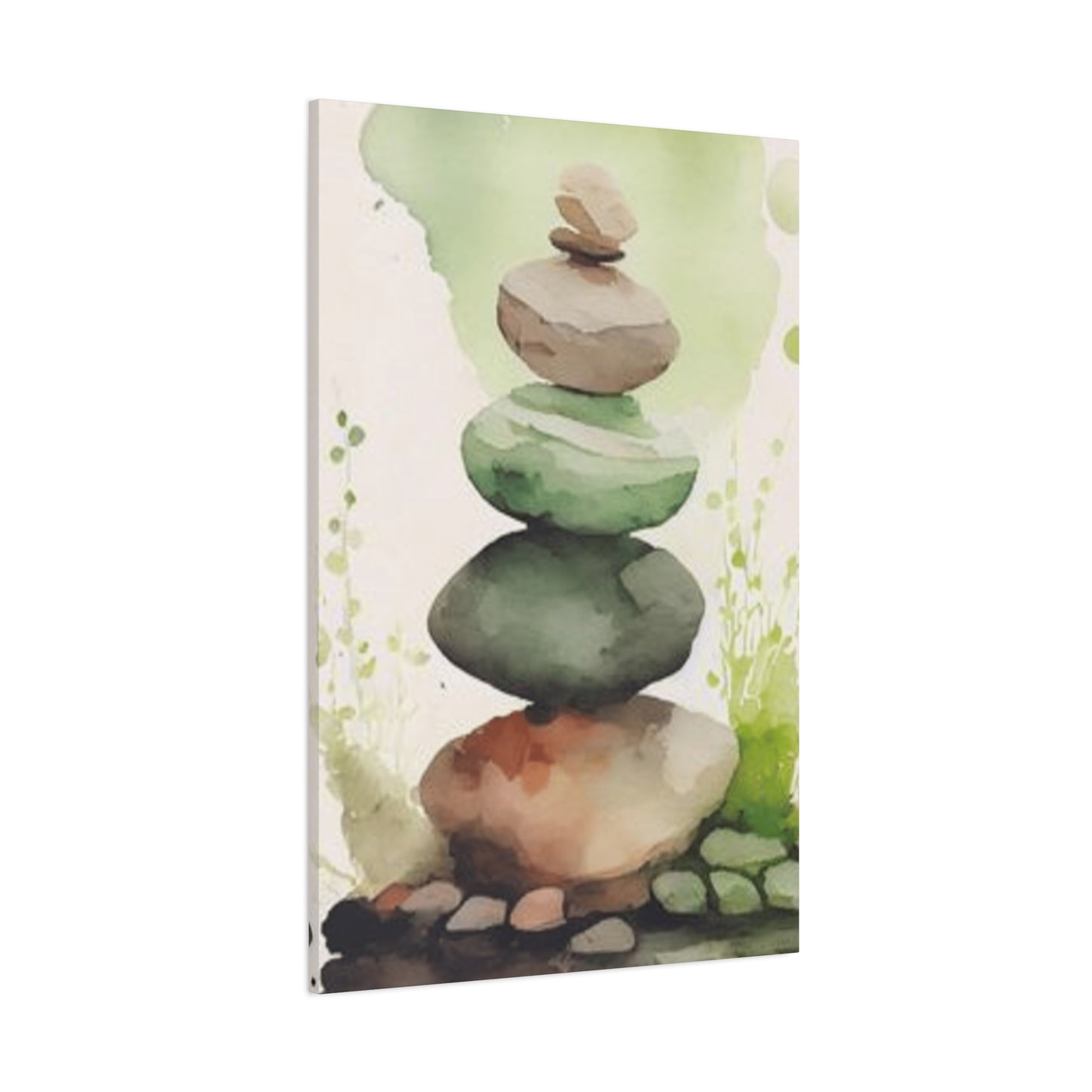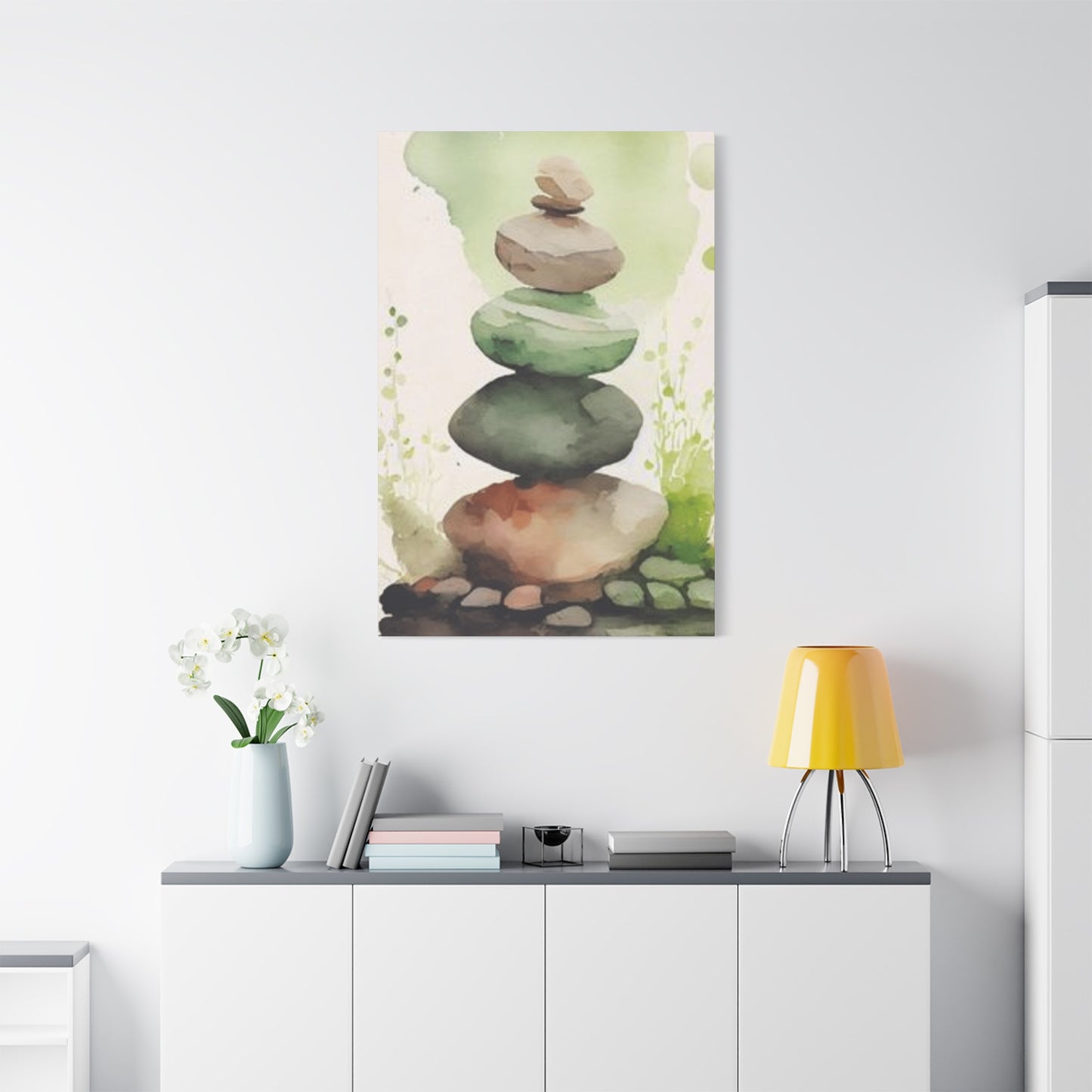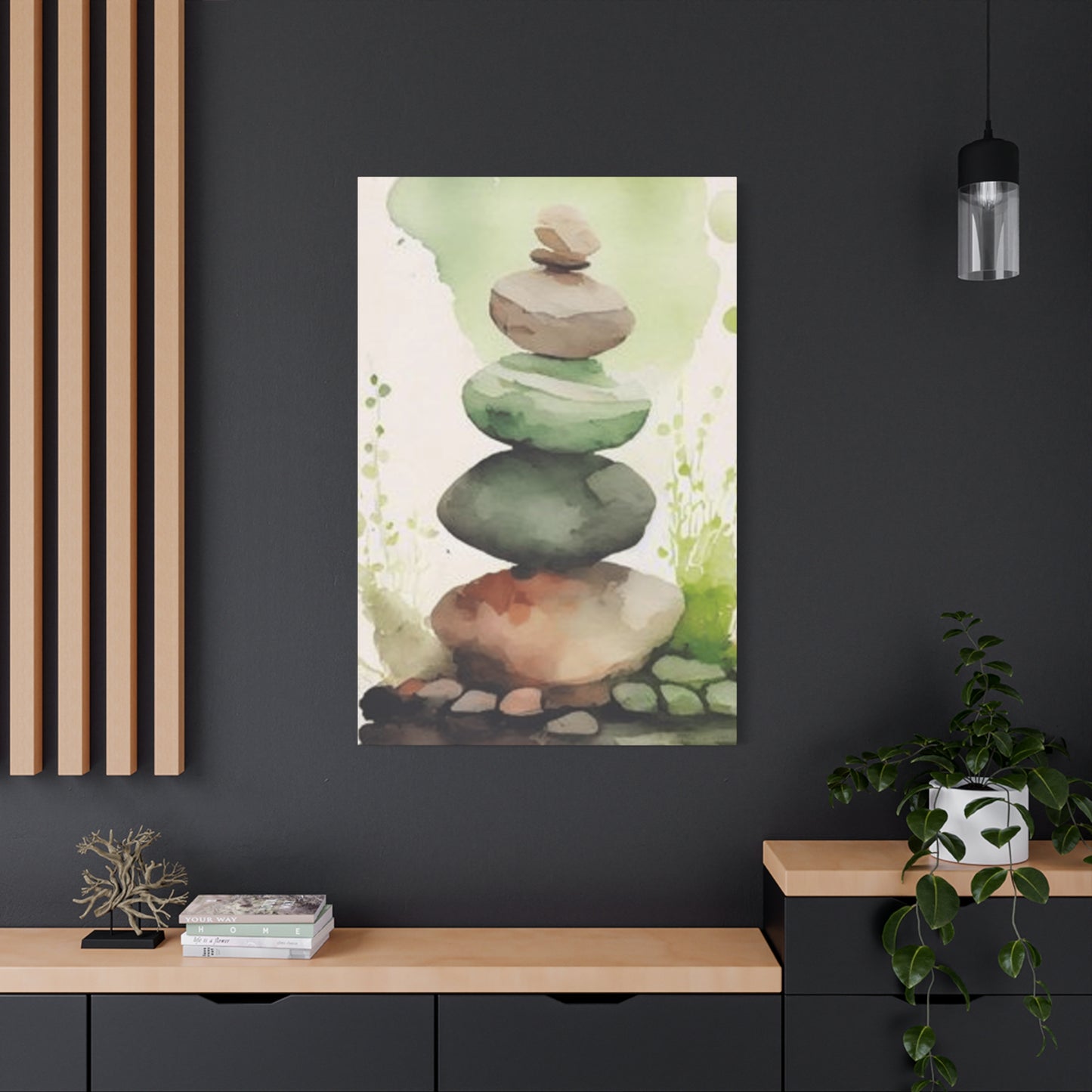Zen Wall Art & Canvas Prints
Zen Wall Art & Canvas Prints
Couldn't load pickup availability
Understanding Zen Decor Wall Art: Origins, Meanings, and How to Use It in Your Home
Zen art emerges from profound spiritual traditions that span millennia, originating within the contemplative practices of Buddhist monasteries across East Asia. This artistic movement transcends mere aesthetic appreciation, serving as a visual manifestation of enlightenment principles that emphasize direct experience over conceptual understanding. The foundational philosophy rests upon the belief that true beauty exists in simplicity, impermanence, and the interconnectedness of all phenomena.
The contemplative nature of these artistic works reflects the Buddhist concept of mindfulness, where each brushstroke becomes a meditation, each composition a doorway to inner stillness. Masters who practiced this discipline understood that creating art was not about producing decorative objects but about cultivating awareness and expressing the inexpressible nature of enlightened consciousness. This philosophical underpinning distinguishes zen art from purely aesthetic movements, as it carries within its forms the accumulated wisdom of generations who sought to capture the essence of awakened perception.
The practice of creating such works requires a state of mental clarity that transcends ordinary thinking patterns. Artists approached their craft as a spiritual discipline, often spending years perfecting not just technical skills but developing the inner composure necessary to allow authentic expression to flow through their hands. This intersection of spiritual practice and artistic creation produced works that resonate with viewers on multiple levels, offering both visual harmony and subtle invitations toward contemplative states.
Contemporary interpretations of these ancient principles continue to honor this spiritual foundation while adapting to modern sensibilities and living spaces. The enduring appeal of zen aesthetics speaks to universal human needs for tranquility, meaning, and connection with something greater than our immediate material concerns. Whether displayed in residential settings or commercial environments, these works carry forward an unbroken lineage of contemplative wisdom that enriches any space they inhabit.
Cultural Evolution Through Chinese Chan and Japanese Traditions
The historical development of zen artistic expression began within Chinese Chan Buddhism during the Tang and Song dynasties, where monks developed distinctive approaches to visual art that reflected their understanding of enlightened awareness. These early practitioners created ink paintings that captured fleeting moments of natural beauty with remarkable economy of means, using minimal brushstrokes to suggest vast landscapes, towering mountains, and flowing waters.
Chinese masters like Liang Kai and Muqi established foundational techniques that emphasized spontaneity, asymmetry, and the expressive power of empty space. Their works demonstrated how negative areas within compositions could be as meaningful as painted elements, introducing concepts that would profoundly influence subsequent artistic developments. These pioneering artists understood that true mastery lay not in accumulating technical skills but in developing the ability to respond authentically to each creative moment.
The transmission of these practices to Japan during the Kamakura period resulted in unique cultural adaptations that reflected Japanese aesthetic sensibilities and philosophical interpretations. Japanese zen artists developed their own distinctive approaches while maintaining the essential spirit of the tradition, creating works that embodied concepts like mono no aware (the pathos of things) and wabi-sabi (beauty in imperfection). This cultural translation enriched the artistic vocabulary without compromising the contemplative essence.
The influence of tea ceremony culture on Japanese zen aesthetics created additional layers of meaning and refinement. The principles governing tea preparation – harmony, respect, purity, and tranquility – found expression in visual arts through careful attention to proportion, texture, and the subtle relationships between elements within compositions. This integration of daily spiritual practice with artistic creation established models that continue to inspire contemporary practitioners.
Regional variations across different cultural contexts demonstrated the adaptability of zen principles while maintaining core philosophical commitments. Korean, Vietnamese, and other Southeast Asian interpretations contributed unique perspectives that expanded the expressive possibilities within this contemplative tradition. These diverse cultural contributions created a rich tapestry of artistic approaches unified by shared spiritual foundations.
Meditation as Artistic Practice and Creative Foundation
The relationship between meditative practice and artistic creation forms the cornerstone of authentic zen art, where the process of making becomes as significant as the finished work. This approach transforms the creative act from mere craft production into spiritual discipline, requiring practitioners to cultivate states of awareness that transcend ordinary consciousness. The rhythmic movements of brush on paper mirror the breathing patterns of seated meditation, creating natural correspondences between inner states and outer expression.
Traditional training methods emphasized developing what masters called "beginner's mind," an attitude of openness and fresh perception that allows each creative moment to unfold without preconception or habitual responses. Students spent years learning to quiet mental chatter and respond directly to the immediacy of their experience, whether facing a blank canvas or natural landscape. This disciplined attention to present-moment awareness enabled artists to bypass intellectual analysis and express essential qualities of their subjects.
The concept of "one mind" in zen practice translates into artistic creation as unified action where there is no separation between artist, brush, ink, and paper. This state of absorption eliminates self-consciousness and allows natural expression to flow through technical skills without interference from ego-driven concerns about results or recognition. Masters described this experience as "painting without painting," where the work emerges spontaneously from deeper sources of creativity.
Breathing coordination with brushwork creates natural rhythms that mirror the pulse of life itself, connecting artistic practice with fundamental biological and cosmic patterns. Advanced practitioners developed sensitivity to subtle energy flows that guided their movements, resulting in works that carry qualities of aliveness and presence that purely technical approaches cannot achieve. This integration of body, breath, and awareness produces art that resonates with viewers on unconscious levels.
The discipline required to maintain meditative awareness throughout the creative process develops patience, humility, and acceptance of imperfection as natural aspects of existence. These qualities become embedded within the artworks themselves, communicating values that support contemplative living and spiritual growth. Modern practitioners who approach zen art with genuine understanding of its meditative foundations continue to produce works that carry transformative potential.
Symbolic Language and Universal Archetypal Meanings
The symbolic vocabulary of zen art draws upon centuries of contemplative insight into the relationships between external phenomena and internal spiritual states, creating visual languages that communicate across cultural boundaries while maintaining specific cultural significance. Natural elements like mountains, water, bamboo, and plum blossoms carry layered meanings that speak to both universal human experiences and particular philosophical concepts within Buddhist thought.
Mountain imagery represents stability, permanence, and the aspiration toward enlightened awareness, while also acknowledging the illusory nature of apparent solidity through techniques that suggest rather than define forms. Rivers and streams symbolize the flow of consciousness and the impermanent nature of all phenomena, depicted through fluid brushwork that captures movement while maintaining compositional balance. These natural metaphors provide accessible entry points for contemplation while carrying sophisticated philosophical content.
The frequent appearance of bamboo in zen compositions reflects its symbolic associations with flexibility, resilience, and the ability to bend without breaking under pressure. Artists appreciated bamboo's hollow interior as representing the empty nature of enlightened consciousness, while its jointed structure suggested the gradual stages of spiritual development. The seasonal cycle of bamboo growth and dormancy paralleled the rhythms of contemplative practice, with periods of intensive effort alternating with phases of integration and rest.
Birds, particularly cranes and sparrows, appear in zen art as symbols of freedom from worldly attachments and the spontaneous expression of enlightened activity. The effortless flight of birds represents the natural ease that emerges from deep spiritual realization, while their songs symbolize dharma teachings that arise spontaneously to benefit all beings. Artists captured these qualities through loose, confident brushwork that conveyed both precision and abandon.
Circle imagery, whether complete or broken, carries profound significance as representation of completeness, wholeness, and the boundless nature of awakened consciousness. The enso circle, painted in single fluid movements, became particularly important in Japanese zen as expression of the artist's spiritual state at the moment of creation. These circles invite contemplation of perfection within imperfection and the presence of infinity within finite forms.
Contemporary Relevance and Modern Spiritual Hunger
The increasing popularity of zen aesthetics in contemporary culture reflects widespread recognition of the need for balance in lives dominated by digital stimulation, consumer pressures, and accelerating social change. Modern individuals often experience what contemplative traditions describe as "monkey mind" – restless, scattered attention that jumps from thought to thought without finding satisfaction or peace. Zen art offers visual anchors that invite deeper states of awareness and provide respite from mental agitation.
The minimalist qualities inherent in zen design philosophy align with growing environmental consciousness and desires for sustainable living practices that reduce consumption while maximizing meaning and satisfaction. Contemporary practitioners appreciate how zen principles support both ecological responsibility and personal well-being through emphasis on quality over quantity, durability over disposability, and contentment over endless acquisition. These values resonate strongly with individuals seeking alternatives to materialistic lifestyles.
Scientific research into contemplative practices has validated many traditional claims about the benefits of meditative states, providing contemporary frameworks for understanding how zen art can support mental health, stress reduction, and cognitive enhancement. Studies of attention, creativity, and emotional regulation confirm that environments designed according to contemplative principles can measurably improve human flourishing and productivity. This scientific backing has encouraged broader adoption of zen aesthetics in healthcare, workplace design, and residential settings.
The global circulation of zen influences through international art markets, museum exhibitions, and digital media has created new hybrid forms that blend traditional principles with contemporary concerns and cultural perspectives. Young artists worldwide draw inspiration from zen traditions while addressing current social issues, environmental challenges, and technological implications for human consciousness. These creative syntheses demonstrate the continuing vitality and relevance of contemplative artistic approaches.
The therapeutic applications of zen-inspired environments have found recognition in healthcare facilities, senior living communities, and mental health treatment centers where calming visual environments support healing processes and emotional well-being. Research into environmental psychology confirms that spaces designed according to contemplative principles can reduce anxiety, lower blood pressure, and improve recovery rates from various medical conditions. These practical applications validate traditional understanding of art's power to influence consciousness and support human flourishing.
The Science of Contemplative Aesthetics
Neuroscientific research into contemplative practices has begun illuminating the mechanisms through which zen art affects consciousness and well-being, providing contemporary validation for traditional claims about the transformative power of contemplative aesthetics. Brain imaging studies reveal that viewing zen-inspired artworks activates neural networks associated with attention regulation, emotional balance, and self-awareness, suggesting measurable benefits from engagement with these contemplative forms.
The concept of "soft fascination" identified by environmental psychology researchers describes how certain visual stimuli capture attention gently without demanding intensive cognitive processing, allowing the mind to rest while remaining engaged. Zen compositions exemplify this quality through their use of subtle variations, natural rhythms, and spacious arrangements that invite sustained viewing without mental fatigue. This property makes zen art particularly effective for spaces where restoration and renewal are desired.
Studies of visual perception demonstrate how asymmetrical compositions and incomplete forms require active participation from viewers, engaging creative faculties that remain dormant when confronting highly finished or symmetrical artworks. The brain's tendency to complete partial patterns creates collaborative relationships between artworks and observers, fostering states of active contemplation that support cognitive flexibility and creative problem-solving abilities.
Research into attention restoration theory confirms that natural imagery and organic forms help replenish depleted cognitive resources more effectively than geometric or artificial stimuli. Zen art's emphasis on natural subjects and flowing lines provides visual nutrition that supports mental recovery from the directed attention fatigue common in contemporary technological environments. This understanding has influenced design strategies for offices, healthcare facilities, and educational settings.
The phenomenon of "flow states" identified by positive psychology researchers shares many characteristics with contemplative absorption experienced through engagement with zen aesthetics. Both involve focused attention, loss of self-consciousness, and intrinsic motivation that generates positive emotions and enhanced performance. Understanding these parallels has encouraged integration of contemplative design principles into environments intended to support optimal human functioning.
Sacred Geometry and Proportional Harmony
The mathematical relationships underlying zen compositions reflect ancient understanding of proportion, rhythm, and harmonic relationships that create visually satisfying and spiritually resonant arrangements. While not explicitly geometric like Islamic or Gothic art traditions, zen works employ subtle proportional systems that guide placement of elements and create intuitive balance that speaks to deep aesthetic sensibilities.
The golden ratio and its variants appear frequently in zen compositions, though often disguised through organic arrangements that feel natural rather than calculated. Masters understood these proportional relationships intuitively through years of practice and observation, developing sensitivity to harmonic relationships that supported contemplative viewing experiences. Contemporary analysis of classical works reveals sophisticated mathematical structures underlying their apparent simplicity.
Fibonacci sequences and spiral relationships found throughout natural forms influence zen artistic arrangements, connecting human aesthetic preferences with fundamental patterns governing organic growth and cosmic organization. Artists working within this tradition often incorporated these natural rhythms unconsciously through careful observation of their subjects, creating works that resonate with viewers' biological and psychological rhythms.
The concept of dynamic symmetry provides frameworks for understanding how zen compositions achieve balance through asymmetrical arrangements that feel more alive and engaging than static symmetrical forms. This approach creates visual tensions and resolutions that mirror the breath cycles and attention patterns of contemplative practice, supporting sustained engagement without mental strain or boredom.
Sacred proportions appear not only in individual compositions but in the relationships between artworks within installations and their surrounding architectural contexts. Traditional masters considered these environmental relationships essential aspects of artistic practice, creating works specifically designed to enhance and be enhanced by their physical settings. This holistic approach to proportion and placement continues to inform contemporary applications of zen aesthetics.
Mastery of Negative Space and Ma Consciousness
The revolutionary concept of ma represents perhaps the most sophisticated aspect of zen aesthetic philosophy, transcending Western understanding of negative space as mere background to embrace emptiness as active presence that shapes meaning and emotional resonance within artistic compositions. This principle challenges conventional approaches to visual design by recognizing that what is not present can be more powerful than what is depicted, creating breathing room that allows both artworks and viewers to exist in states of openness and possibility.
Traditional masters developed extraordinary sensitivity to spatial relationships, understanding that the intervals between brushstrokes, the pauses between elements, and the expanses of untouched paper carried equal importance with painted areas in creating overall compositional effects. This awareness required years of contemplative training that developed intuitive recognition of when enough had been expressed and when additional elements would diminish rather than enhance artistic impact.
The practical application of ma principles in contemporary interior design involves sophisticated understanding of how spatial relationships affect psychological states and behavioral patterns within living environments. Rooms designed according to these principles feel larger and more serene than conventional approaches might suggest, as generous spacing between furniture pieces and artworks creates opportunities for visual rest that prevent sensory overwhelm and support contemplative awareness.
The timing aspects of ma extend beyond spatial relationships to encompass temporal dimensions of viewing experiences, recognizing that meaningful engagement with artworks requires unhurried attention that allows subtle qualities to emerge gradually. Contemporary practitioners honor this principle by creating display environments that discourage hasty consumption in favor of sustained contemplation, using lighting, seating arrangements, and viewing angles that support meditative engagement.
Advanced understanding of ma consciousness involves recognizing the interdependence between fullness and emptiness, understanding that meaningful content emerges from their dynamic relationship rather than from either extreme alone. This sophisticated perspective informs contemporary approaches to minimalist design that avoid sterile emptiness by maintaining subtle tensions and relationships that keep spaces alive and engaging while supporting contemplative states.
The healing properties of environments designed according to ma principles have found recognition in therapeutic settings where spatial openness supports emotional processing and stress reduction. Healthcare facilities, counseling centers, and retreat environments increasingly incorporate these principles to create atmospheres that facilitate healing and personal transformation through environmental support for contemplative states.
Color Philosophy and Monochromatic Sophistication
The restrained color palettes characteristic of zen aesthetics reflect profound understanding of how color relationships affect consciousness, emotional states, and attention patterns, drawing upon centuries of contemplative inquiry into the subtle influences that visual stimuli exert upon mental stability and spiritual development. Rather than avoiding color from ascetic motivations, zen artists developed sophisticated appreciation for the expressive power of limited palettes that achieve maximum impact through nuanced relationships between closely related tones.
Monochromatic compositions in black ink demonstrate the infinite expressive possibilities available within apparently restricted means, proving that limitation can catalyze rather than constrain creativity when approached with sufficient skill and understanding. Traditional masters developed extraordinary sensitivity to subtle variations in ink density, brush moisture, and paper absorption that enabled them to create rich visual worlds using only gradations of a single color.
The symbolic associations between specific colors and contemplative states guided traditional color choices, with earth tones representing stability and groundedness, blues suggesting depth and tranquility, and muted greens connecting viewers with natural harmony and growth. These color relationships were understood to influence consciousness directly through both cultural associations and possibly deeper physiological responses to different wavelengths of light.
Contemporary color theory validates many traditional insights about color relationships, confirming that muted, harmonious palettes reduce visual stress and support sustained attention better than high-contrast or highly saturated combinations. Research into color psychology demonstrates that the subtle color relationships characteristic of zen aesthetics promote calm alertness and emotional stability, making them particularly appropriate for spaces intended to support contemplative activities.
The integration of natural color variations into contemporary zen-inspired interiors requires sensitivity to how artificial lighting affects color perception and emotional response. Different light sources can dramatically alter the appearance and psychological impact of subtle color relationships, requiring careful consideration of both natural and artificial illumination when selecting and displaying zen-influenced artworks and design elements.
Seasonal color variations within zen aesthetics reflect deep appreciation for natural cycles and impermanence, with different times of year calling forth different color sensibilities that maintain harmony with environmental changes. This approach to color creates living relationships between interior spaces and natural rhythms, supporting awareness of larger patterns and cycles that connect human experience with cosmic processes.
Brushwork Techniques and Gestural Expression
The fundamental brushwork methods that define authentic zen artistic expression represent highly refined syntheses of technical skill, contemplative awareness, and spontaneous responsiveness that require years of disciplined practice to develop adequately. These techniques transcend mere technical proficiency to embody states of consciousness that allow natural expression to flow through trained hands without interference from self-consciousness or conceptual thinking.
Single-breath brushstrokes exemplify the integration of physical technique with meditative awareness, requiring artists to coordinate breathing patterns with hand movements in ways that produce fluid, confident marks that carry qualities of aliveness and presence. These strokes cannot be faked through purely technical approaches but emerge naturally from states of unified awareness where there is no separation between intention and execution.
The famous "flying white" technique, where brushes are moved across textured surfaces to create broken lines that suggest rather than define forms, demonstrates the sophistication of traditional approaches to suggestion and implication. This method requires precise control of brush moisture, pressure, and speed to achieve effects that feel spontaneous while accurately capturing essential qualities of depicted subjects.
Gradated washes that transition seamlessly from dense black to transparent gray require mastery of ink consistency, paper absorption, and timing that comes only through extensive practice and development of tactile sensitivity. These techniques enable artists to create atmospheric effects that suggest depth, distance, and environmental conditions through purely abstract means that engage viewers' imaginative participation.
The integration of calligraphic elements with pictorial imagery requires understanding of how different types of brushwork can coexist within single compositions while maintaining overall harmony and coherence. Traditional masters developed abilities to shift between descriptive and abstract modes of expression within individual works, creating visual conversations between different aspects of their subjects.
Contemporary adaptations of traditional brushwork principles accommodate new materials and tools while maintaining essential qualities of spontaneity, sensitivity, and expressive directness. Modern practitioners work with digital media, acrylic paints, and alternative surfaces while honoring the contemplative foundations that give zen brushwork its distinctive character and spiritual resonance.
Asymmetrical Balance and Dynamic Equilibrium
The sophisticated understanding of balance that characterizes mature zen compositions transcends simple symmetrical arrangements to embrace complex relationships between visual weights, directional forces, and spatial tensions that create more engaging and lifelike equilibrium within artworks. This approach reflects deep appreciation for the dynamic balance found throughout natural systems, where stability emerges from constantly shifting relationships rather than static arrangements.
The principle of triangular composition provides structural frameworks that feel stable while maintaining visual interest through asymmetrical placement of primary elements. Traditional masters developed intuitive sensitivity to these underlying geometric relationships while disguising them through organic arrangements that feel natural rather than contrived or overly intellectual in their organization.
Counterbalancing heavy elements with areas of visual lightness requires sophisticated understanding of how different qualities of mark-making, color density, and spatial positioning affect perceived weight within compositions. A small area of intense activity can balance larger areas of quiet simplicity when positioned correctly, creating efficient use of compositional resources that maximizes expressive impact.
The concept of visual rhythm guides the placement of repeated elements throughout compositions, creating patterns that lead viewers' eyes through artworks in ways that support contemplative viewing experiences. These rhythms often mirror natural patterns like breathing cycles, water flow, or seasonal changes, connecting visual experiences with fundamental life processes that feel familiar and comforting.
Directional forces within compositions create implied movement and energy that prevent zen artworks from feeling static or lifeless despite their emphasis on tranquility and stability. Subtle diagonal relationships, flowing lines, and carefully positioned focal points generate visual currents that engage attention while supporting meditative states rather than creating restless agitation.
The integration of asymmetrical balance principles into contemporary interior design creates environments that feel dynamic and alive while maintaining the tranquil qualities associated with zen aesthetics. Furniture arrangements, lighting schemes, and artwork placement that honor these principles produce spaces that support both active engagement and contemplative rest.
Natural Forms and Organic References
The profound relationship between zen aesthetics and natural phenomena reflects understanding that human beings are most deeply nourished by visual environments that maintain connections with organic processes, seasonal cycles, and the fundamental patterns that govern life throughout the natural world. This relationship transcends mere pictorial representation to encompass formal qualities like growth patterns, structural relationships, and energy flows that characterize living systems.
Traditional subject matter including bamboo groves, mountain landscapes, flowing water, and seasonal flowers provided artistic vocabulary that communicated specific philosophical concepts while maintaining immediate visual appeal and recognizable content. These subjects were chosen not merely for their beauty but for their symbolic associations and their ability to evoke particular states of consciousness through contemplative viewing.
The principle of capturing essence rather than appearance guided traditional approaches to natural subjects, encouraging artists to identify and express fundamental qualities that made each subject unique and meaningful rather than creating detailed reproductions of surface features. This approach required deep observation and contemplative engagement with subjects that went far beyond casual visual inspection.
Seasonal variations within natural imagery reflected understanding of impermanence and change as fundamental aspects of existence, with different times of year calling forth different aesthetic sensibilities and emotional qualities. Spring compositions emphasized emergence and growth, summer works celebrated abundance and maturity, autumn pieces reflected harvest and preparation, while winter artworks explored dormancy and essential structure.
The integration of natural forms into contemporary zen-inspired environments requires sensitivity to how artificial contexts affect the perception and emotional impact of organic references. Natural materials, lighting conditions, and spatial relationships that support rather than conflict with natural imagery help maintain the contemplative qualities that make these references meaningful and psychologically nourishing.
Biophilic design principles validate traditional zen understanding of human needs for connection with natural systems, confirming that environments incorporating organic forms, natural materials, and references to natural processes support physical health, emotional well-being, and cognitive function better than purely artificial environments.
Texture and Surface Quality Relationships
The subtle interplay between different surface textures within zen compositions creates rich sensory experiences that engage viewers on multiple levels while maintaining overall harmony and contemplative atmosphere. Traditional materials like handmade papers, natural fibers, and mineral pigments provided textural variety that added depth and interest to compositions without compromising their essential simplicity and spiritual focus.
The absorbent qualities of traditional papers created unique relationships between brushwork and surface texture, with ink spreading and feathering in ways that softened hard edges and created atmospheric effects that enhanced the contemplative qualities of finished works. These material properties were understood as collaborators in the creative process rather than constraints to be overcome through technical mastery.
Contrast relationships between smooth and textured areas, glossy and matte surfaces, and fine and coarse materials create visual interest that prevents zen compositions from feeling monotonous while supporting sustained contemplative engagement. These subtle variations provide anchors for attention that allow extended viewing without mental fatigue or sensory overwhelm.
The integration of natural wear patterns and aging effects reflects zen appreciation for impermanence and the beauty that emerges through time and use. Rather than trying to maintain pristine conditions, traditional aesthetics embraced the patina and weathering that accumulated on artworks and objects through normal handling and environmental exposure.
Contemporary applications of texture principles accommodate modern materials and production methods while honoring the essential relationships that create contemplative visual experiences. Digital printing techniques, synthetic materials, and industrial production methods can support zen aesthetic principles when employed with sensitivity to textural relationships and surface quality considerations.
The psychological effects of textural variation within zen-inspired environments contribute to sense experiences that support relaxation and contemplative awareness. Research into haptic psychology confirms that even visual exposure to varied textures can influence stress levels, attention quality, and emotional states in ways that support well-being and cognitive function.
Scale and Proportion in Living Spaces
The sophisticated manipulation of scale relationships within zen compositions demonstrates understanding of how size variations affect emotional impact, viewing experiences, and the integration of artworks into their surrounding environments. Traditional masters developed sensitivity to proportional relationships that create visual harmony while supporting contemplative engagement and spiritual reflection.
The principle of human scale ensures that artworks and design elements maintain accessible proportions that feel comfortable and inviting rather than overwhelming or intimidating. This consideration becomes particularly important in residential settings where individuals spend extended time and need to feel at ease with their visual environment rather than constantly stimulated or challenged.
Intimate scale relationships between artworks and furniture, architectural features, and human activities create cohesive environmental experiences where all elements support and enhance each other rather than competing for attention or creating visual confusion. These relationships require careful consideration of viewing distances, sight lines, and the intended uses of different spaces.
The concept of graduated scale provides frameworks for creating visual transitions between areas of different sizes and functions within larger environments. Careful progression from smaller to larger elements, or vice versa, creates smooth visual flows that guide attention and movement through spaces in ways that support contemplative awareness and peaceful coexistence.
Monumental scale applications of zen principles demonstrate how contemplative aesthetics can be adapted to larger spaces and public environments while maintaining their essential qualities of tranquility and spiritual depth. Museums, corporate settings, and institutional environments can benefit from zen-inspired approaches that create oases of calm within potentially stressful or overstimulating contexts.
The relationship between artwork scale and viewing time reflects understanding that different sizes of works invite different types of engagement, with intimate pieces encouraging close examination and extended contemplation while larger works support more expansive awareness and environmental integration. Successful installations balance these different types of engagement to create rich, multifaceted experiences.
Room-by-Room Sanctuary Development
The transformation of conventional living spaces into contemplative environments requires systematic understanding of how different rooms serve distinct functions while contributing to overall household harmony and spiritual well-being. Each area presents unique opportunities for incorporating zen principles while addressing practical needs and lifestyle requirements that vary between individuals and families.
Living areas benefit from zen approaches that create social harmony while supporting both group activities and individual contemplation within shared spaces. Large, uncluttered surfaces provide visual rest that helps family members and guests transition from outside pressures into more peaceful internal states. Seating arrangements that follow zen principles create intimate conversation areas without cramped feelings, using negative space to define territory while maintaining openness and flow.
The strategic placement of single, significant artworks as focal points prevents visual scatter while providing anchors for attention that support contemplative awareness during social interactions. These pieces should be positioned at natural eye level for seated viewers, creating gentle magnets for attention that don't demand constant focus but offer opportunities for brief meditative moments throughout daily activities.
Natural lighting integration becomes crucial in living areas where activities continue throughout different times of day and seasons. Zen-inspired window treatments that filter rather than block sunlight create gentle, changing illumination that connects interior experiences with natural rhythms while maintaining privacy and visual softness that supports relaxation and contemplative states.
Bedroom spaces require particular sensitivity to zen principles that support rest, intimacy, and the daily transitions between sleep and waking consciousness. These private retreats benefit from minimal visual stimulation that allows the mind to settle naturally while maintaining enough sensory interest to prevent sterile feelings that can create anxiety or disconnection.
The careful selection of bedside artworks should emphasize gentle, nurturing imagery that supports both falling asleep and peaceful awakening, avoiding intense colors, dramatic compositions, or challenging content that might stimulate rather than soothe the nervous system. Soft, natural subjects like flowing water, gentle landscapes, or simple botanical forms create appropriate visual companions for these vulnerable transition times.
Lighting Design and Contemplative Illumination
The profound impact of lighting quality on consciousness and spiritual states requires sophisticated understanding of how different types of illumination affect mental clarity, emotional stability, and the ability to access contemplative awareness throughout daily activities. Zen environments prioritize soft, indirect lighting that mimics natural illumination patterns while avoiding harsh contrasts that create visual stress and mental agitation.
Natural daylight remains the gold standard for contemplative illumination, providing full-spectrum radiation that supports circadian rhythms, vitamin synthesis, and emotional well-being while creating constantly changing quality that connects interior experiences with cosmic cycles and seasonal variations. Strategic placement of mirrors, reflective surfaces, and light-colored materials can amplify and distribute natural light throughout spaces without creating glare or harsh reflections.
Artificial lighting systems that support zen environments employ warm color temperatures that approximate candlelight or sunset conditions, avoiding the blue-heavy spectra of conventional fluorescent or LED sources that can create restless mental states and disrupt natural sleep cycles. Dimming capabilities allow adjustment to different activities and times of day while maintaining consistent color quality that supports contemplative awareness.
The integration of concealed lighting sources creates atmospheric effects that enhance contemplative moods without creating obvious technical intrusions that might distract from spiritual focus. Cove lighting, uplighting, and backlighting techniques can create gentle ambient illumination that makes spaces feel larger and more serene while providing adequate task lighting for reading and other detailed activities.
Candles and other flame-based lighting sources provide unique qualities of living light that connect contemporary environments with traditional contemplative practices across many spiritual traditions. The gentle movement, warm color temperature, and natural irregularity of flame-based illumination create hypnotic effects that support meditative states while providing symbolic connections with transformation, impermanence, and the sacred nature of light itself.
Seasonal lighting adjustments that acknowledge changing daylight patterns and personal energy cycles create dynamic relationships between interior environments and larger natural rhythms. Winter lighting strategies might emphasize warmer colors and longer duration to compensate for reduced daylight, while summer approaches could emphasize cooler tones and shorter artificial lighting periods that support natural circadian adjustments.
Furniture Selection and Spatial Flow
The careful selection of furniture pieces that support contemplative lifestyles involves understanding how different forms, materials, and arrangements affect both practical functionality and spiritual atmosphere within living spaces. Zen-inspired furniture emphasizes natural materials, simple forms, and proportions that feel harmonious with human scale while supporting healthy posture and peaceful mental states.
Low seating options including floor cushions, meditation benches, and platform arrangements create intimate relationships with ground level that many people find naturally grounding and calming. These alternatives to conventional chairs and sofas can transform social dynamics by creating more democratic seating arrangements where all participants share similar eye levels and physical relationships to the space.
The integration of multipurpose furniture pieces supports the zen principle of simplicity by reducing visual clutter while maximizing functional efficiency within smaller living spaces. Storage ottomans, convertible tables, and modular seating systems provide flexibility for different activities while maintaining clean visual lines that support contemplative awareness.
Natural wood furniture with visible grain patterns and organic edge profiles creates connections with forest environments that can provide psychological benefits even in urban settings. The choice between different wood species affects both visual character and symbolic associations, with lighter woods suggesting clarity and openness while darker species convey stability and depth.
Fabric selections for upholstered pieces should emphasize natural fibers with subtle textures that feel pleasant to touch while avoiding patterns or colors that create visual stimulation or distraction. Neutral earth tones, soft grays, and muted blues provide versatile backgrounds that support the display of zen artworks while creating restful environments for daily activities.
The arrangement of furniture pieces within rooms should create natural traffic patterns that flow smoothly while providing distinct areas for different activities without rigid separation or cramped feelings. Strategic placement of key pieces can define intimate conversation areas, reading nooks, and contemplative spaces while maintaining overall openness and visual coherence.
Plant Integration and Living Elements
The inclusion of living plants within zen-inspired environments provides essential connections with natural growth processes, seasonal changes, and the life force energy that supports both physical health and spiritual well-being. The selection and placement of appropriate species requires understanding of how different plants affect indoor air quality, light conditions, and maintenance requirements while contributing to contemplative atmosphere.
Bamboo species appropriate for container growing provide excellent examples of zen plant integration, offering vertical elements that suggest strength and flexibility while requiring minimal care and thriving in various light conditions. The hollow stems and segmented growth patterns of bamboo carry symbolic associations with emptiness, steady progress, and the ability to bend without breaking under pressure.
Broad-leafed plants like peace lilies, rubber trees, and monstera species create substantial green presences that soften architectural edges and provide visual rest for eyes fatigued by digital screens and artificial environments. These larger specimens can serve as living sculptures that change subtly over time while contributing to air purification and humidity regulation within indoor spaces.
Moss gardens and terrarium displays bring miniature landscapes indoors while requiring minimal space and maintenance, creating opportunities for close observation of natural processes that support mindfulness practice and appreciation for small-scale beauty. These contained ecosystems demonstrate principles of interdependence and balance while providing focal points for contemplative attention.
Flowering plants should be selected for subtle beauty rather than dramatic displays, with species like orchids, gardenias, and jasmine providing gentle color and fragrance that enhance contemplative mood without overwhelming the senses. The temporary nature of flowers provides regular reminders of impermanence while their fragrance creates additional sensory dimensions that enrich meditative experiences.
The strategic placement of plants to create natural divisions between functional areas provides organic alternatives to architectural partitions while maintaining visual flow and connection throughout spaces. Larger plants can define reading areas or meditation corners while smaller specimens provide intermediate scale transitions that create visual rhythm and natural proportion relationships.
Conclusion
The selection of appropriate textiles for zen-inspired environments requires sensitivity to how different fabrics affect both visual atmosphere and physical comfort while supporting the contemplative qualities that define authentic implementations of these aesthetic principles. Natural fiber preferences reflect both practical considerations and philosophical alignments with organic processes and sustainable lifestyle choices.
Linen fabrics provide excellent foundations for zen textile applications, offering natural texture variations, excellent breathability, and aging characteristics that develop attractive patina over time rather than appearing worn or degraded. The slightly irregular weave patterns of handwoven linens create subtle visual interest that prevents monotony while maintaining overall simplicity and natural character.
Cotton materials in their unbleached, undyed states provide neutral backgrounds that complement rather than compete with zen artworks while offering familiar comfort and easy maintenance characteristics. Organic cotton choices support environmental consciousness while avoiding chemical treatments that might affect indoor air quality or sensitive individuals who react to conventional textile processing methods.
Wool textiles selected for natural colors and simple weave patterns provide warmth and acoustic benefits that support comfortable contemplative environments while honoring traditional craft methods that connect contemporary living with cultural heritage and sustainable production practices. Hand-spun and naturally dyed wool pieces carry additional symbolic value as expressions of human creativity working in partnership with natural materials.
Silk fabrics used sparingly as accent pieces can provide subtle luxury and refined texture without overwhelming zen sensibilities, particularly when chosen in natural ivory, pale gray, or soft earth tones that harmonize with overall aesthetic approaches. The natural protein fibers of silk create pleasant tactile experiences while reflecting light in ways that enhance ambient illumination.
The layering of different textile weights and textures creates rich sensory experiences that support comfort throughout different seasons while maintaining visual harmony and contemplative atmosphere. Lightweight summer fabrics can be supplemented with heavier winter layers that transform spaces gradually rather than requiring dramatic seasonal redecorating that might disrupt established contemplative routines.
Maintenance considerations for zen textile selections should emphasize natural cleaning methods and aging gracefully rather than maintaining pristine appearances that require intensive care or frequent replacement. Fabrics that improve with age and use support zen appreciation for impermanence and natural processes while reducing environmental impact through extended useful life.
Share
